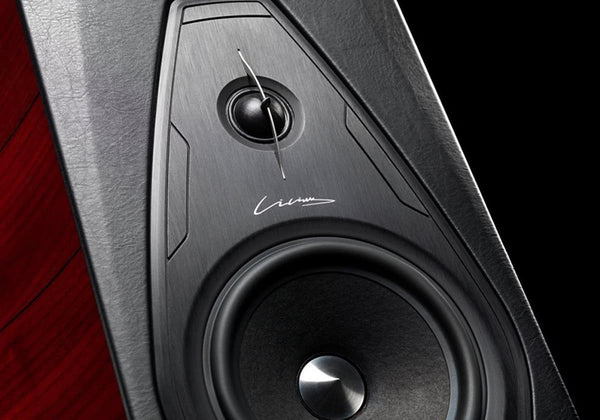
Sonus faber Lilium Loudspeaker
The years leading up to the launch of the Lilium loudspeaker signaled a turning point for Sonus faber, with a deliberate return to the traditions of Italian craftsmanship. The introduction of the Aida loudspeaker in late 2011 was key in establishing many of the aesthetic and engineering principles that would eventually shape the Lilium’s creation.
Working with these principles, the Lilium was designed be a large, full-sounding speaker that would be stable and easily adaptable to different room acoustics. While Lilium sports a more compact footprint than the physically imposing Aida, Sonus faber designers retained the signature lyre shape of the speaker. As Sonus faber’s Paolo Tezzon says, “Lilium is returning to the musical instrument primal design.” A perfect marriage of form and function, the lyre shape is both breathtaking visually and beneficial acoustically.
Within the walls of the Lilium’s cabinet, a complex infrastructure of progressive-thickness walls and sub-structural ribs works in harmony to optimize resonance and control spurious vibrations. Modern engineering advances also play a major role in the Lilium. The speaker’s 1” damped apex-dome tweeter is a Sonus faber design (dubbed the “Arrow Point”), while the 7” midrange driver is a scaled-down version of Aida’s. The three 7” woofers use a Sonus faber designed lightweight paper “sandwich” cone structure, which according to Tezzon brings, “natural resolution and tone.”
Lilium also features multiple crossover points and a “zero vibration transmission” passive-tuned radiator. The result of all this research and development is what Sonus faber’s Livio Cucuzza proclaims, “a completely new speaker in Sonus faber history.”
Undoubtedly, the Lilium marks a further step forward in the stylistic and acoustic research by Sonus faber.

